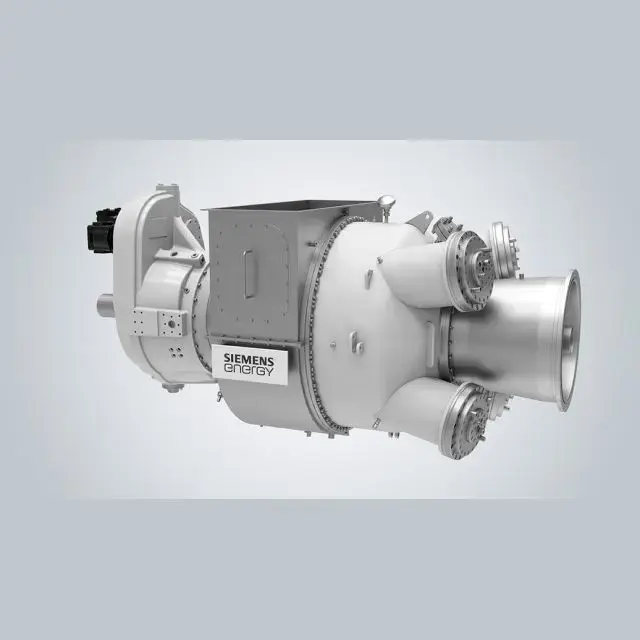Siemens Energy stands as a global powerhouse in the energy technology sector, and its Siemens gas turbines are fundamental pillars of its portfolio. Renowned for their engineering excellence, high efficiency, and operational flexibility, these turbines are deployed worldwide, generating reliable power for grids, industries, and communities. This article delves deep into five critical aspects that define the significance and capabilities of Siemens gas turbines.

At the heart of every Siemens gas turbine lies decades of cutting-edge engineering and continuous innovation. These machines operate on the Brayton cycle, compressing incoming air, mixing it with fuel (typically natural gas, but also capable of using hydrogen blends, syngas, or liquid fuels), igniting the mixture, and expanding the hot gases through multiple turbine stages to generate rotational energy. This energy drives a generator to produce electricity.
Siemens pushes technological boundaries with features like:
Advanced Aerodynamics: Precision-designed compressor and turbine blades maximize airflow efficiency and energy extraction, minimizing losses.
High-Temperature Materials: Utilizing sophisticated nickel-based superalloys and advanced cooling techniques (film cooling, internal convection channels), Siemens gas turbines can operate at turbine inlet temperatures exceeding 1600°C (2912°F) in their latest models. This directly translates to higher efficiency.
Robust Combustion Systems: Siemens has pioneered burner technologies (like its proprietary Silo, Annular, and Can-Annular designs evolving into advanced hybrid systems) that ensure stable, low-emission combustion across a wide operating range.
Precision Manufacturing: State-of-the-art manufacturing facilities ensure components meet exacting tolerances for reliability and performance. The integration of additive manufacturing (3D printing) is increasingly used for complex parts like burner heads and turbine blades, enabling optimized designs previously impossible.
This relentless focus on core engineering ensures that Siemens gas turbines deliver exceptional performance, durability, and longevity, forming the reliable backbone of modern power generation.
Efficiency is paramount in power generation, impacting both operational costs and environmental footprint. Siemens gas turbines consistently set industry benchmarks, particularly in their H-class range. Achieving net electrical efficiencies exceeding 63% in simple cycle mode and pushing beyond 64% in combined cycle configurations, these turbines represent the pinnacle of commercially available technology.
Key contributors to this exceptional efficiency include:
High Pressure Ratios: Modern Siemens compressors achieve very high pressure ratios, significantly increasing the potential energy output from the fuel.
Optimized Turbine Cooling: Sophisticated cooling schemes allow components to withstand extreme temperatures without compromising component life, enabling higher firing temperatures crucial for efficiency gains.
Advanced Cycle Design: Integration of features like steam cooling in some advanced models further boosts overall plant efficiency.
H-Class Technology: The flagship SGT5-8000H/9000HL series exemplifies this efficiency leadership. Units like those at the Irsching power plant in Germany have demonstrated world-record efficiency levels in real-world operation.
The pursuit of higher efficiency is relentless. Siemens continuously invests in R&D to squeeze more megawatts from every unit of fuel consumed, making their gas turbines economically compelling and environmentally advantageous.
In an era demanding cleaner energy, Siemens gas turbines are engineered to minimize environmental impact. They play a vital role in the transition from coal to lower-carbon natural gas generation and are increasingly capable of utilizing hydrogen as a decarbonized fuel.
Siemens achieves low emissions through:
Dry Low Emission (DLE) Combustion Systems: This technology, a hallmark of modern Siemens gas turbines, premixes fuel and air thoroughly before combustion. This lean-burn approach dramatically reduces flame temperature peaks, significantly lowering the formation of nitrogen oxides (NOx) without needing water or steam injection. Current systems achieve NOx levels well below 25 ppmvd (often down to 15 ppmvd or lower) at baseload, and even lower levels (single-digit ppm) are achievable with post-combustion controls like SCR.
Carbon Monoxide (CO) and Hydrocarbon (UHC) Control: Optimized combustion dynamics ensure complete fuel burnout, minimizing CO and unburned hydrocarbons.
Fuel Flexibility for Decarbonization: A critical advantage is the ability of many Siemens gas turbines to operate on hydrogen blends. Siemens offers turbines capable of burning natural gas mixed with up to 75% hydrogen by volume (with development targeting 100%), significantly reducing CO2 emissions. This positions Siemens turbines as long-term assets in a decarbonizing grid.
Compliance: Siemens designs its turbines to meet stringent global environmental regulations (like EPA standards in the US and EU directives).
By integrating clean combustion technologies and pioneering hydrogen capabilities, Siemens gas turbines provide a cleaner power generation pathway.
The flexibility and scalability of Siemens gas turbines make them suitable for a vast array of applications beyond large utility power plants:
Utility-Scale Power Generation (Simple & Combined Cycle): This remains the core application. Siemens turbines, especially the H-class and F-class (like SGT5-4000F/6000F), are the workhorses of modern combined cycle power plants (CCPP), offering high efficiency and dispatchability. Simple cycle plants provide fast power for peak demand or grid stability.
Combined Heat and Power (CHP) / Cogeneration: Siemens gas turbines excel in CHP applications. Waste heat from the turbine exhaust is captured to produce steam for industrial processes or district heating, boosting overall plant efficiency to 80-90%. This is highly attractive for industries (chemicals, refining, paper) and district energy systems.
Industrial Power: Reliable on-site power generation for large industrial facilities, ensuring energy security and potentially utilizing process waste gases as fuel.
Oil & Gas: Powering offshore platforms, LNG liquefaction plants, and pipeline compression stations. Siemens turbines adapted for mechanical drive service are crucial here.
Hybrid Systems: Integration with renewable energy sources (solar PV, battery storage) is increasingly common. Siemens gas turbines provide the flexible, dispatchable backup needed to compensate for renewable intermittency.
District Energy: Providing efficient heating and cooling for urban areas.
Siemens offers a broad portfolio, from smaller industrial turbines (like the SGT-300, SGT-400) to mid-range A35 and F-class units, up to the massive H-class turbines, ensuring a solution for virtually any power need.
Siemens doesn't just build turbines; it provides comprehensive digital solutions and services to maximize their value throughout their operational life. Leveraging its Siemens Xcelerator portfolio and the cloud-based open IoT operating system, MindSphere, Siemens offers:
Remote Monitoring and Diagnostics (RM&D): Continuous, real-time monitoring of turbine parameters allows Siemens experts to detect potential issues early, optimize performance, and recommend predictive maintenance actions, preventing costly unplanned outages.
Digital Twins: Virtual replicas of the physical turbine allow for simulation, performance prediction, and optimization of maintenance schedules and operational strategies.
Advanced Analytics: Using machine learning and AI on operational data to uncover deeper insights into performance trends, efficiency opportunities, and component health.
Cybersecurity: Integrated solutions to protect critical turbine control systems from cyber threats.
Comprehensive Service Agreements: From long-term service agreements (LTSAs) to customized maintenance plans, outage management, and component repair/upgrades, Siemens provides the expertise and logistics to ensure high availability, reliability, and extended turbine life. Modernization and upgrade packages can significantly enhance output, efficiency, and emissions performance of existing fleets.
Training and Support: Global technical support and extensive training programs empower operators.
This integrated approach to digitalization and service transforms the Siemens gas turbine from a standalone machine into an intelligently connected asset, maximizing uptime, efficiency, and return on investment.
Siemens gas turbines represent a convergence of advanced engineering, environmental responsibility, and digital intelligence. Their unparalleled efficiency sets industry standards, while their evolving capability to utilize hydrogen positions them as critical enablers of the global energy transition. From powering massive utility plants to providing efficient heat and electricity for industries and cities, their versatility is unmatched.
Coupled with Siemens Energy's deep commitment to innovation and its comprehensive suite of digital services and lifecycle support, Siemens gas turbines are more than just power generators; they are sophisticated energy solutions designed for reliability, sustainability, and long-term value. As the world seeks cleaner, more flexible, and efficient power generation technologies, Siemens gas turbines will undoubtedly continue to play a pivotal role in powering progress well into the future.
 Gas Turbine
Gas Turbine
 Aircraft parts
Aircraft parts